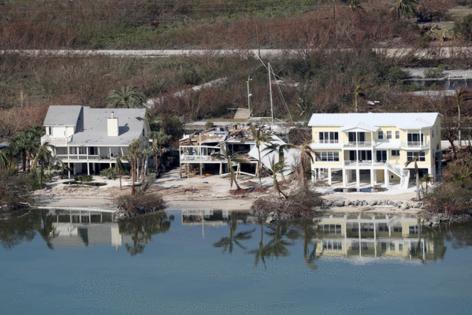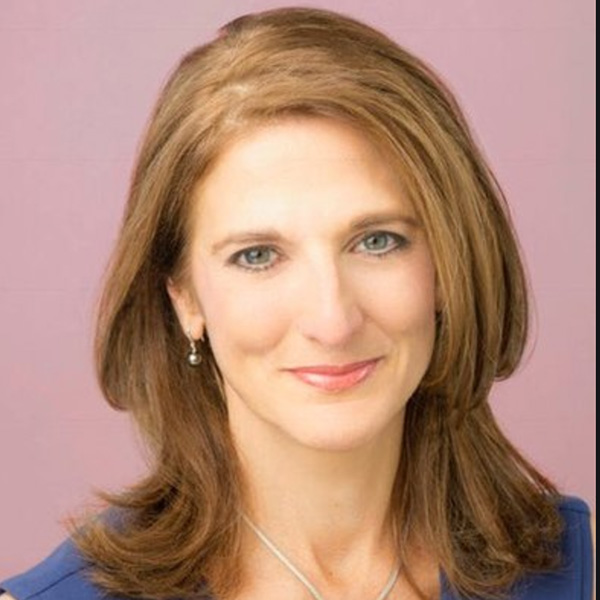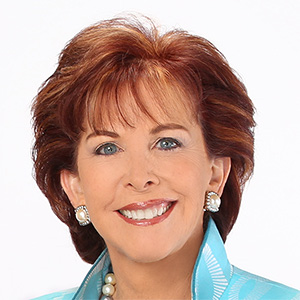The truth about Florida home insurance prices: Most homeowners still seeing hikes
Published in Business News
About those home insurance rate decreases that Florida lawmakers and insurance executives have been crowing about for nearly a year:
Data released by the Florida Office of Insurance Regulation shows a majority of policyholders in the state are continuing to see costs rise for all-perils coverage of their single-family homes.
In fact, among customers of the 90 residential property insurers regulated by the state, two-thirds were insured by companies that posted average premium increases between January and May, while only a third were insured by companies that posted decreases. Companies with average cost reductions served 1.37 million homeowners while companies with increased average costs insured 2.77 million customers.
While rate reductions and newly entering companies have produced competition and lower costs for some, the latest data shows a majority of homeowners must still wait to see relief from annual cost hikes that have burdened the state for nearly a decade.
The South Florida Sun Sentinel recently asked subscribers of its Facebook account to report whether their costs went up or down the last time they renewed. Of 16 who responded, only one reported a decrease, and he said he had to switch companies to get it.
Among those who reported increases, Edwin Copeland, a Fort Lauderdale resident, called homeowner insurance “a total scam.” He wrote that his cost increased despite the fact that “I have every discount possible and never filed a claim.”
Lana Leigh Rose, who lives in Ormond Beach, said her insurance increased to $6,100 a year. It’s a 1959 mid-century cement block bungalow that she purchased eight years ago. She said she has filed “no claims ever, (I’m) located in a non-flood zone with a total roof replacement in 2017.”
Over the five months, average premiums declined for 19 of the 90 home insurance companies regulated by the state, according to a South Florida Sun Sentinel analysis of Residential Market Share Reports that the office this year began releasing on a monthly, in addition to quarterly, basis. Those declines ranged from 16% to 0.07%, and were below 2.4% for 15 of the 19 companies.
But those companies include one of Florida’s largest — state-owned Citizens Property Insurance Corp., which saw its average premium cost decline by 1.7% during the first five months of 2025, the data shows. Citizens’ population also declined sharply over the five months, from 449,948 to 357,460, due primarily to the company’s aggressive effort to encourage private market insurers to depopulate the so-called insurer of last resort.
Citizens’ cost declines, despite rising rates, could be a result of private market insurers tending to select the least risky, most profitable properties to “take out” of Citizens, according to insurance experts. They tend to be more recently built, higher priced homes that pay a larger insurance premium. Older, riskier homes, with cheaper insurance, are often left behind.
Meanwhile, cost increases for 64 of the insurers ranged from 0.3% for 12 customers of Crestbrook Insurance to 61.3% for the two homes insured by National Specialty Insurance.
In between, costs increased by 10% or more for nine companies, from 4% to 9.2% for 19 companies, and by up to 4% for 36 companies.
Reforms driving rate improvements, insurance insiders say
Still, lawmakers and insurance insiders contend that the market continues to improve, thanks to Florida insurance law reforms enacted in 2022 and 2023.
The reforms reduced incentives for policyholders, contractors and attorneys to sue insurers with little risk of having to pay insurers’ attorneys fees whether or not the suits were successful.
After the reforms were enacted, insurers were no longer required to pay all legal fees of plaintiffs when they agreed to settle claims disputes for any amount over their original offers.
As recently as June 29, Insurance Commissioner Mike Yaworsky was quoted in an office news release as touting 14 new insurers writing in Florida since the reforms were enacted and “over 120 residential filing requests for rate decreases or 0% increases so far this year.”
But the analysis shows that policyholders on average have only seen lower costs from the stabilized rates between the third and fourth quarters of 2024, when average premiums decreased by 0.8%. The data shows costs rising an average 0.3% between the fourth quarter of 2024 and the first quarter of 2025.
The next quarter could see an even larger increase. From March to May, average premiums increased from $3,702 to $3,721, or 0.5%, according to a comparison of figures in the monthly market share reports.
Mark Friedlander, senior director of media relations for the industry-funded Insurance Information Institute, attributed the increase seen in March through May to “inflationary impacts of replacement costs, such as construction materials and labor.”
Dulce Suarez-Resnick, vice president of sales at the Miami-based agency Acentria Insurance, said that even a 6% to 8% base rate decrease can result in lower cost reductions because each policy contains what’s called an “inflation guard” mechanism that automatically increases coverage limits to keep pace with rising costs.
So if a base premium of $1,000 is reduced to $940 by a 6% base rate decrease, a 5% inflation guard increase will wipe out all but $10 of the base rate decrease.
Following that formula, which ignores differences in coverage, geography and claims history, a base rate reduction that’s actually lower than the inflation guard increase would result in a higher-cost premium.
Some insurance agents say they are seeing costs decrease for some of their customers, particularly in South Florida. The region has been considered the most hurricane-prone in the state, but the last several storms that struck Florida have come ashore along the western coast. In addition, the legal reforms have reduced claims costs in the state’s most litigious region.
Agents urge homeowners to shop for cheaper policies
Nicole Marcus-Douman, owner of the Tamarac-based agency The Marcus Group, says homeowners dissatisfied with their premiums should check out other options because South Florida is becoming more attractive to insurers.
“It’s a great time to shop around,” she said in a recent interview. “It’s a soft market. There are so many companies writing in South Florida right now. ”
The increased appetite to insure homes in South Florida has created competition for policies among the newly arriving companies as well as some existing companies that pulled out of the market when high rates of litigation threatened their ability to operate profitably, Marcus-Douman said.
“I’m in Broward and there are companies that I have personally been selling for 15, 18 years and they hadn’t written one policy in Broward County and they have opened up within the last 12 months. And they are writing and they are growing,” she said.
Steve Rogosin, owner of the Plantation-based Rogosin Insurance agency, says that while costs have increased over the past 12 months by an average of 5% for clients who stay with the same insurer, some clients have reduced their costs by reaping discounts for stormproofing their homes.
Others have saved money by changing to insurers “more friendly to their situation,” he said. “For example, if a carrier that gives a discount for (living in) a gated community opens up capacity, then it can help those who were not getting that discount with their prior carrier.”
Chris Heidrick, whose agency Heidrick & Co. is located in Southwest Florida’s Lee County, says some of his clients are seeing large reductions but they have to change carriers to get them.
“That is what we are seeing now as clients move to new insurers or older insurers who have broadened their underwriting appetite,” he said.
But Brian Murphy, owner of The Murphy Agency, a Brightway Insurance franchise, said clients in Palm Beach, Broward and Monroe counties with up-to-date windstorm mitigation features are seeing “modest premium drops,” as are policyholders who renew with the same carriers.
Suarez-Resnick agrees that more insurers are again competing in the South Florida market.
Companies now insuring homes in the region, she said, include Universal Property & Casualty (limited to some ZIP codes), Florida Peninsula, Edison, Ovation, Tower Hill, Heritage, Florida Family, Homeowners Choice and First Protective (also known as Frontline).
Frontline is the only carrier besides Citizens that also writes hurricane insurance in Monroe County, Suarez-Resnick said, and some policyholders there have experienced large discounts by switching to Frontline.
Stephanie Sherman, a personal lines agent with Naples-based Harbour Insurance, said she had a client in Naples whose premium fell from $4,000 to $2,400 recently because he switched to Frontline.
Sherman says she agrees that it’s a good time for South Florida insurance customers to shop around.
“I would say that even if they are not renewing anytime soon, I think that it’s good to definitely take a look and see. It doesn’t hurt to know what’s out there,” Sherman said.
©2025 South Florida Sun Sentinel. Visit at sun-sentinel.com. Distributed by Tribune Content Agency, LLC.












Comments